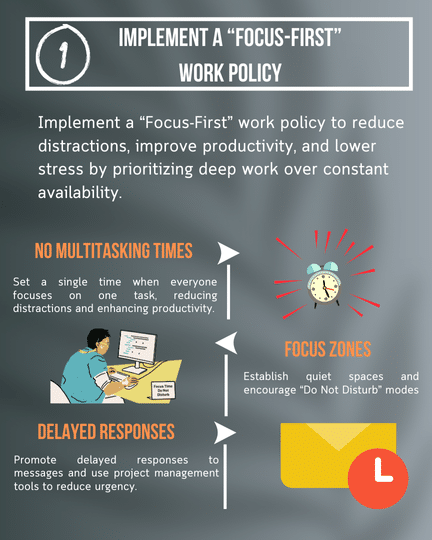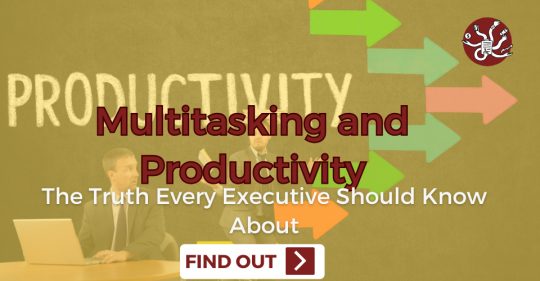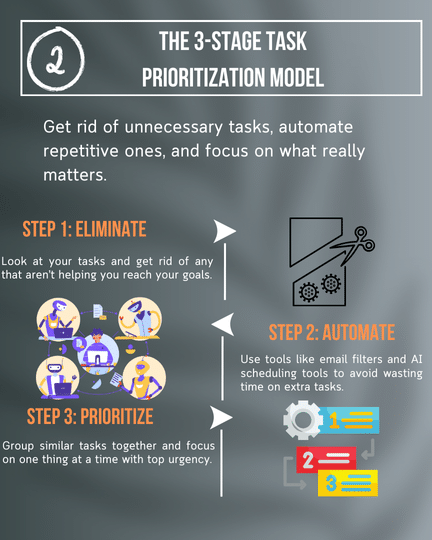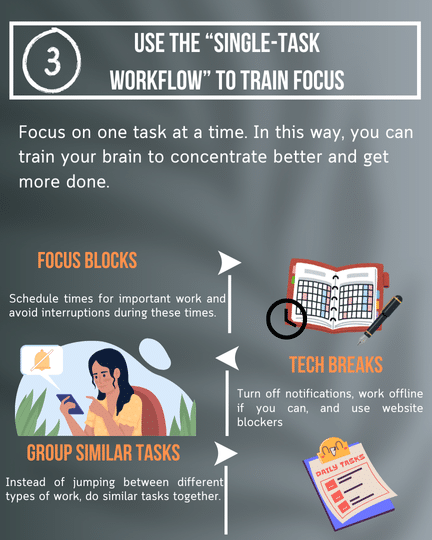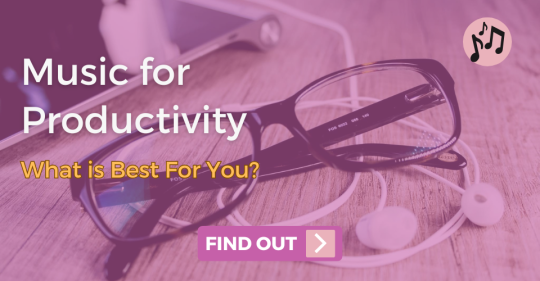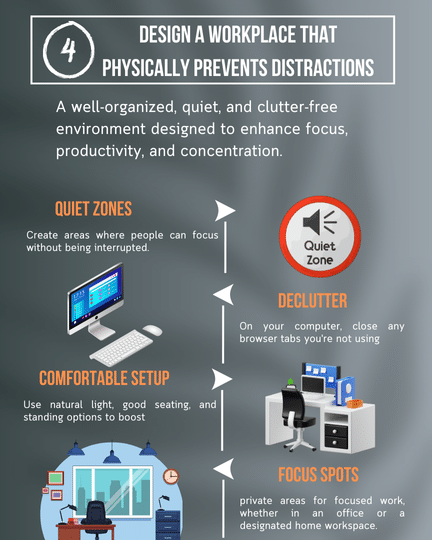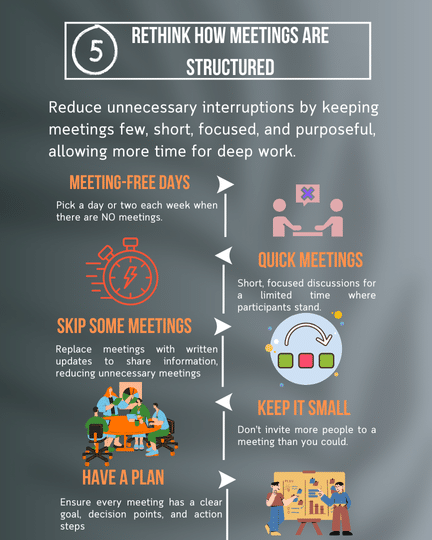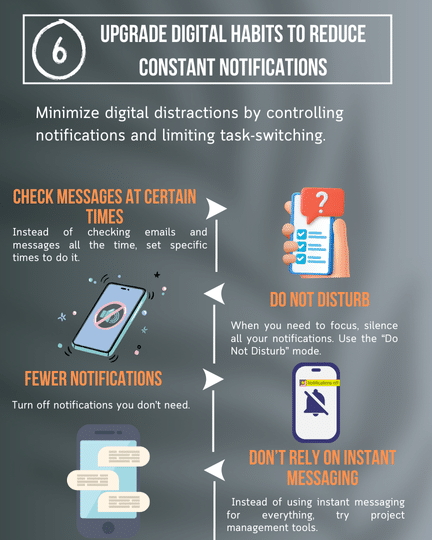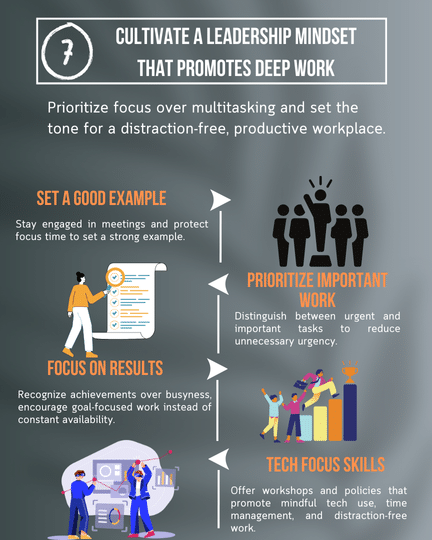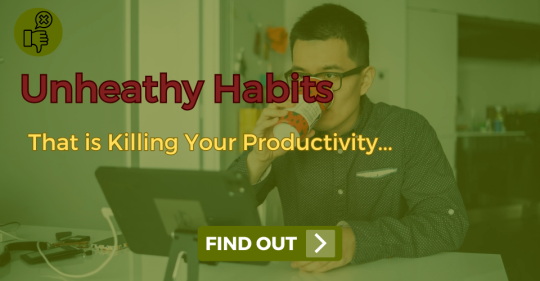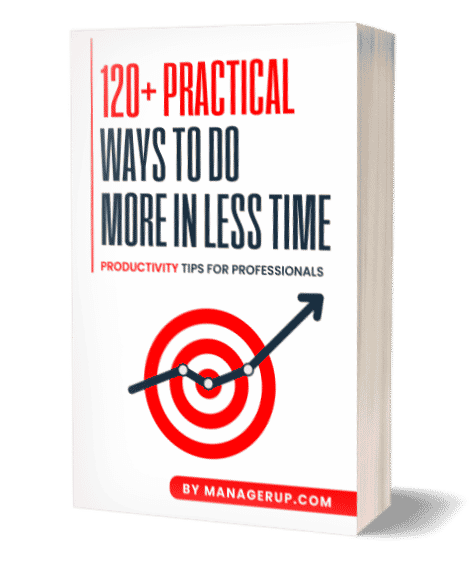- Strategy 1: Implement a “Focus-First” Work Policy
- Strategy 2: The 3-Stage Task Prioritization Model
- Strategy 3: Use the “Single-Task Workflow” to Train Focus
- Strategy 4: Design a Workplace That Physically Prevents Distractions
- Strategy 5: Rethink How Meetings Are Structured to Minimize Disruptions
- Strategy 6: Upgrade Digital Habits to Reduce Constant Notifications
- Strategy 7: Cultivate a Leadership Mindset That Promotes Deep Work
- Wrapping Up: Focused Leaders, Successful Future
Ever find yourself juggling emails, reports, and messages, only to realize you’ve barely made a dent in your actual work? We’ve all been there. In today’s busy world, it’s easy to get caught up in the whirlwind of multitasking, thinking it’s the key to getting things done. But the truth is, it’s actually holding us back.
For those in leadership roles, the consequences of constant task-switching are even more significant. Instead of boosting efficiency, it scatters your attention, amplifies stress levels, and ultimately leads to decisions you might regret. Research shows that multitasking can drastically reduce your productivity and hinder your ability to think clearly – making effective leadership nearly impossible. What’s more, a distracted work environment can spread like wildfire, impacting your entire team and leading to widespread burnout.
But there’s hope! You can break free from the multitasking trap and create a workplace where focus thrives. By implementing practical, research-based strategies, you can reclaim your concentration and boost your team’s performance. This article will provide effective techniques to avoid multitasking and outline leadership strategies that cultivate deep focus and maximize productivity. Let’s get started!
Strategy 1: Implement a “Focus-First” Work Policy
When we expect everyone to be available all the time, multitasking takes over. If people feel like they have to answer every email, message, or call immediately, they can’t focus on what’s important. That’s where a “Focus-First” approach comes in. It changes how we work, so we can be more productive and less distracted.
Why Does This Work?
A “Focus-First” plan helps cut down on distractions by setting clear expectations for when and how people should focus on their most important tasks. When people don’t feel pressured to answer right away, they can:
- Focus: Stay focused on their work without being interrupted.
- Do Better Work: Produce higher-quality work instead of rushing through things.
- Feel Less Stressed: Avoid feeling overwhelmed by doing one thing at a time.
Without time to focus, people are constantly switching between tasks, which makes them less productive and wastes energy.
How to Do It?
- No Multitasking Times: Set specific times during the day or week when everyone focuses on one task at a time. For example, maybe mornings are for focused work with no emails, meetings, or messages. Leaders should participate too, to show that focused work is important.
- Focus Zones: Create quiet spaces in the office or encourage people working from home to turn off notifications and set a “Do Not Disturb” status on their messaging apps.
- Delayed Responses: Encourage people to answer messages later, when it’s convenient for them, instead of expecting immediate responses. Use project management tools to help with this. Managers should set a good example by avoiding unnecessary “urgent” messages.
How This Helps Create a Distraction-Free Workplace?
- Protected Time: People know they have time to focus without being interrupted.
- Better Work: The focus shifts from reacting to everything to doing high-quality work.
- More Productive: People get more done because they’re not constantly switching between tasks.
- Less Stress: People feel less stressed because they can focus on their work without feeling like they have to be available all the time.
By using this plan, you create a workplace that values focus over busyness, helping everyone get more done by doing less at once.
Strategy 2: The 3-Stage Task Prioritization Model
One of the biggest reasons we multitask is that we have too much to do. When we feel overwhelmed by a never-ending to-do list, we jump between tasks, hoping to get more done. But this actually makes us less focused, lowers the quality of our work, and creates more distractions.
Here’s a better way: a 3-step plan to prioritize your tasks. By getting rid of unnecessary tasks, automating repetitive ones, and focusing on what really matters, you can work with a clear mind and avoid distractions.
Why Does This Work?
This plan helps you clear your mind and focus on the tasks that truly matter instead of wasting time on less important things. This helps you work strategically and avoid the urge to multitask.
When you know what to focus on, you’re less likely to:
- Waste time: You won’t spend time on things that don’t really matter.
- Get interrupted: You can avoid getting sidetracked by unimportant tasks.
- Feel overwhelmed: You won’t feel the need to constantly check for messages because you’ll know you’re focused on the right things.
Studies show that having a plan for your tasks can help you work better, feel less stressed, and focus on one thing at a time.
How to Do It?
- Step 1: Eliminate: Not everything on your to-do list is actually important. Take some time each week to look at your tasks and get rid of any that aren’t helping you reach your goals. Also, set boundaries to avoid unnecessary meetings or reports.
- Step 2: Automate: Many daily distractions come from routine tasks that can be automated. Use tools like email filters, auto-replies, project management software (like Trello or Asana), and AI scheduling tools to avoid wasting time on these tasks.
- Step 3: Prioritize: Once you’ve eliminated and automated some tasks, make a plan for the remaining ones. Group similar tasks together and focus on one thing at a time.
How This Helps Create a Distraction-Free Workplace?
- Less Mental Clutter: Getting rid of unnecessary tasks helps clear your mind.
- Better Focus: You’ll spend less time switching between tasks and more time focusing on what matters.
- Fewer Interruptions: Automating tasks prevents you from having to constantly stop your work to deal with them.
- Focus on What Matters: Prioritizing tasks ensures that you’re spending your time on the most important things.
This organized approach helps you avoid the chaos of multitasking and work with a clear mind, creating a workspace where focus is the norm, not the exception.
Strategy 3: Use the “Single-Task Workflow” to Train Focus
In today’s workplace, we’re constantly switching between tasks, like checking emails, responding to messages, and juggling different projects. This not only breaks our focus but also makes it hard to concentrate on one thing for very long.
To fix this, try the “Single-Task Workflow.” This means focusing on one task at a time. By doing this, you can train your brain to concentrate better and get more done.
Why Does This Work?
- Clear Your Mind: When you multitask, your brain can’t fully focus on a new task because it’s still thinking about the last one.
- Focus = Better Work: When you train your brain to focus, you can ignore distractions, get more done, and make better decisions.
- Less Stress: Focusing on one thing at a time makes you less stressed and tired, so you can work better without feeling overwhelmed.
Research shows that it takes about 23 minutes to regain focus after being interrupted. That’s a lot of wasted time! By focusing on one task at a time, you can save time and get more done.
How to Do It?
- Focus Blocks: Our brains focus best in 90-minute blocks. Schedule times for important work and avoid interruptions during these times. For example, from 9 AM to 10:30 AM, work on one project, then take a break.
- Tech Breaks: A lot of distractions come from technology. During your focus time, turn off notifications, work offline if you can, and use website blockers to avoid distractions.
- Group Similar Tasks: Instead of jumping between different types of work, do similar tasks together. For example, check your email only twice a day instead of constantly.
How This Helps Create a Distraction-Free Workplace?
- Fewer Interruptions: When people focus on one task at a time, there are fewer interruptions.
- Better Work: People can get more done and do better quality work when they focus.
- Organized Workplace: A single-task workflow helps create a more organized and productive work environment.
- Good Example: When leaders focus on one task at a time, it shows everyone that this is how to do good work.
By focusing on one task at a time, you can train your brain to work better, creating an environment where you can do focused, meaningful work.
Strategy 4: Design a Workplace That Physically Prevents Distractions
Even with the best plans, your workspace matters a lot. A messy, noisy, or poorly designed workspace makes it hard to concentrate. By making your workspace better, both people working from home and in the office can create an environment that helps them focus.
Why Does This Work?
- Your space affects your mind: If your workspace is cluttered or full of distractions, your brain feels cluttered, too.
- Noise is bad for work: Too much noise can make you 66% less productive.
- The right space helps you focus: Just like a gym is designed for exercise, a distraction-free workspace helps you concentrate.
One study found that people in open offices get interrupted way more than those in quiet spaces. That’s why it’s important to create a workspace that minimizes distractions.
How to Do It?
- Quiet Zones: Create areas where people can focus without being interrupted. If you have an open office, give people noise-canceling headphones. You can also use white noise machines or quiet music to block out distractions.
- Declutter: A messy desk makes a messy mind. Keep only the things you need close by. On your computer, close any browser tabs you’re not using and keep your desktop clean.
- Good Lighting and Comfortable Setup: Bad lighting can make you tired and make it hard to focus. Use natural light if you can. Having a good chair and the option to stand while you work can also help you focus and avoid burnout.
- Focus Spots: If you have space, create small, private areas where people can work without being interrupted. If people work from home, encourage them to set up a dedicated workspace instead of working from the couch or bed.
How This Helps Create a Distraction-Free Workplace?
- Focus: People can concentrate better without noise and interruptions.
- Better Workspaces: When workspaces are designed for focus, people can be more productive.
- Focus-First Culture: When everyone knows that certain spaces are for focused work, it reinforces the importance of concentration.
By making the workplace a place where people can concentrate, you’re removing the things that distract them. This leads to a more productive, calm, and focused work environment for everyone.
Strategy 5: Rethink How Meetings Are Structured to Minimize Disruptions
Meetings can be a huge time-waster at work. Too many meetings, or ones that are poorly planned, make it hard to concentrate on the important stuff. When people spend hours in meetings they don’t really need, there’s not much time left for real work. The solution? Make meetings smarter and less distracting.
Why Does This Work?
- Fewer interruptions: This gives everyone more time to focus on their work without being constantly pulled away.
- No more meeting fatigue: Too many meetings make people tired, unfocused, and waste everyone’s time.
- Better meetings: When every meeting has a clear purpose, things get done more efficiently.
Studies show that a lot of managers feel like meetings stop them from getting their work done. People waste a ton of time each month in unproductive meetings. We’re not saying get rid of all meetings, but let’s make them shorter, more focused, and less distracting.
How to Do It?
- Meeting-Free Days: Pick a day or two each week where there are NO meetings. This gives everyone time to really concentrate. For example, maybe Wednesdays and Fridays are “no meeting” days.
- Quick Meetings: Have “stand-up” meetings where everyone stands. This keeps things moving and focused. Limit these meetings to 15-20 minutes and only talk about the most important things.
- Skip Some Meetings: Instead of having a meeting to give updates, use tools like Slack, Notion, or Asana to share written updates. This avoids unnecessary meetings that interrupt people’s work.
- Keep it Small: Don’t invite more people to a meeting than you could feed with two pizzas (around 6-8 people). Smaller meetings mean fewer distractions, more participation, and faster decisions.
- Have a Plan: Every meeting needs a clear purpose. Before you schedule it, ask: What’s the goal? What needs to be decided? What should happen after the meeting? If there’s no clear goal, cancel the meeting.
How This Helps Create a Distraction-Free Workplace?
- More Focus Time: People spend less time in pointless meetings, so they have more time to concentrate on their work.
- Better Meetings: Shorter, well-organized meetings mean people can participate more and get more done.
- Less Wasted Time: When meetings are planned well, people aren’t as tired, and they get more work done.
By making meetings better, you’re getting rid of a major distraction. This helps create a workplace where people can focus on what really matters instead of being stuck in endless meetings.
Strategy 6: Upgrade Digital Habits to Reduce Constant Notifications
Technology is a tool, but if we don’t use it right, it can distract us from work. Emails, messages, social media, and app notifications can interrupt our focus and make us try to do too many things at once.
To avoid distractions at work, we need to use technology in a smarter way. Instead of letting it control our day, we should control it.
Why Does This Work?
- Less “always-on”: People can focus on their work without feeling like they have to answer every message right away.
- No more constant switching: Switching between tasks all the time makes us less productive and more tired.
- Using tech for good: We can use technology to help us work better, not just distract us.
Studies show that people check their email or messages every few minutes. This means we almost never get a full hour of uninterrupted work! Every time we get interrupted, it takes about 23 minutes to get our focus back. If we change our tech habits, we can focus better and work smarter, not just faster.
How to Do It?
- Check Messages at Certain Times: Instead of checking emails and messages all the time, set specific times to do it, like 10 AM and 4 PM. Use automatic replies to let people know when you’ll get back to them.
- “Do Not Disturb”: When you need to focus, silence all your notifications. Use the “Do Not Disturb” mode on Slack or block distracting apps with tools like Freedom or Cold Turkey.
- Fewer Notifications: Turn off notifications you don’t need, like those from group chats, social media, and less important emails. You can also group your notifications together using tools like Google’s Focus Mode or Apple’s Screen Time.
- Don’t Rely on Instant Messaging: Instead of using instant messaging for everything, try project management tools like Notion, Trello, or Asana. This takes the pressure off to answer right away and lets people focus on their work.
How This Helps Create a Distraction-Free Workplace?
- More Focus: People spend less time reacting to notifications and more time doing deep work.
- Work Smarter, Not Harder: Instead of being “always-on,” people can focus on their work in a more intentional way.
- Better Work: Fewer interruptions mean better quality work, less stress, and more efficiency.
By controlling digital distractions, people can take back their attention. This leads to better focus, smarter decisions, and a more organized work environment.
Strategy 7: Cultivate a Leadership Mindset That Promotes Deep Work
Distractions at work don’t just come from technology or a noisy office. Often, they come from how leaders act. If leaders are always multitasking, checking emails in meetings, or expecting immediate responses, everyone else will do the same.
To create a distraction-free workplace, leaders need to set a good example. They should prioritize focused work, avoid unnecessary urgency, and show everyone how to be productive without distractions.
Why Does This Work?
- Leaders set the tone: If a manager is always multitasking, their team will feel like they have to do the same.
- Focus starts at the top: When leaders value focus, it gives everyone permission to concentrate on their work.
- Long-term focus: This encourages everyone to focus on doing work efficiently and effectively, not just being busy.
Studies show that distractions at work cost companies a lot of money because people get less done. When leaders encourage focused work, it helps everyone do their best.
How to Do It?
- Set a good example: In meetings, be present and avoid distractions like emails and messages. Use your own focus time to show that it’s important.
- Prioritize important work: Help people understand the difference between urgent tasks and important tasks. Not everything needs to be answered immediately.
- Focus on results: Reward people for doing good work, not just for being busy. Encourage people to focus on achieving goals, not just working long hours or always being available.
- Teach focus skills: Offer workshops on how to focus, manage time, and use technology mindfully. Create policies that support focus, like quiet hours or dedicated workspaces.
How This Helps Create a Distraction-Free Workplace?
- Less pressure: People feel less pressure to multitask and more freedom to focus on important work.
- Culture of focus: Leaders create a work environment where focus is valued.
- Better work: The workplace becomes more organized and productive.
When leaders embrace focused work, everyone benefits. The entire workplace becomes a place where people can concentrate and do their best work.
Wrapping Up: Focused Leaders, Successful Future
For a long time, people thought multitasking was a good thing, but now we know it hurts us more than it helps. Switching between tasks all the time makes it hard to pay attention, stresses us out, and makes us less productive. This is especially true for leaders because it affects their decision-making, how they lead their teams, and how well their teams perform.
But there’s good news! Leaders can create a work environment free from distractions, where people can focus on doing important, high-quality work. This means making some changes, like setting times for focused work, minimizing distractions, and having fewer meetings. Most importantly, leaders need to set a good example by focusing on one thing at a time and valuing quality over being constantly available.
When a workplace values focus, people do better work, feel better, and the company is more successful in the long run. Even small changes, like setting aside time for focused work, turning off notifications, or having better meetings, can make a big difference.
The best leaders in the future won’t be the ones who do the most things. They’ll be the ones who focus on what truly matters.
Think you know the answers? Take this quiz to confirm (or challenge) your knowledge.
